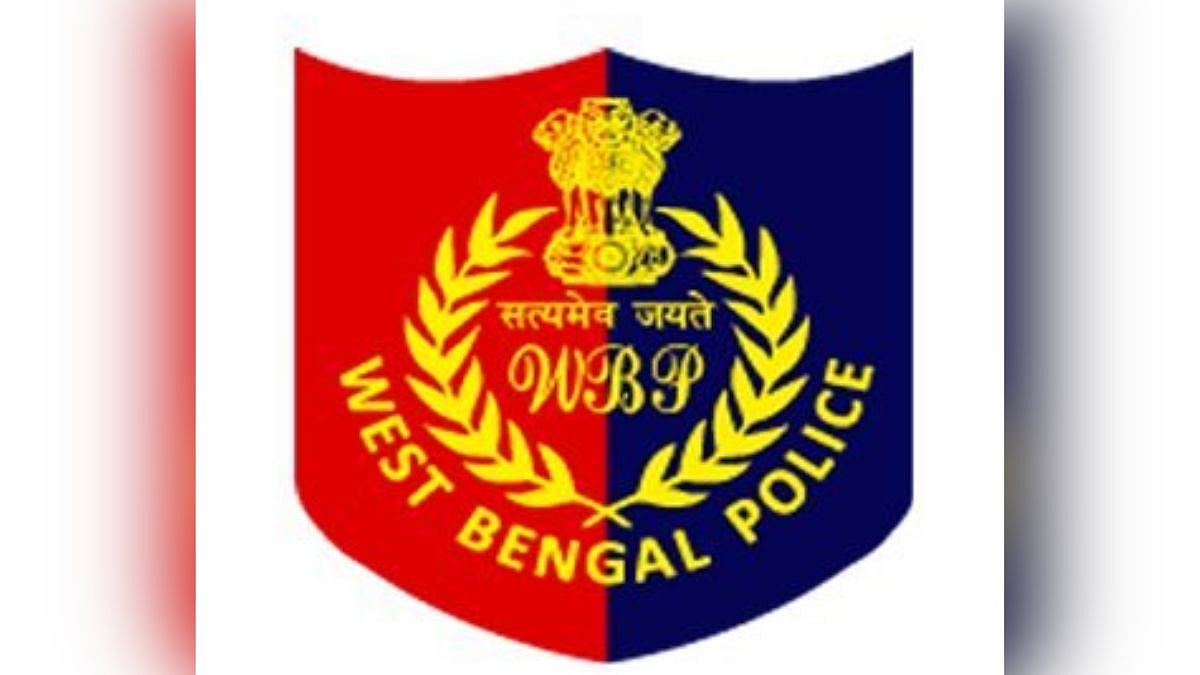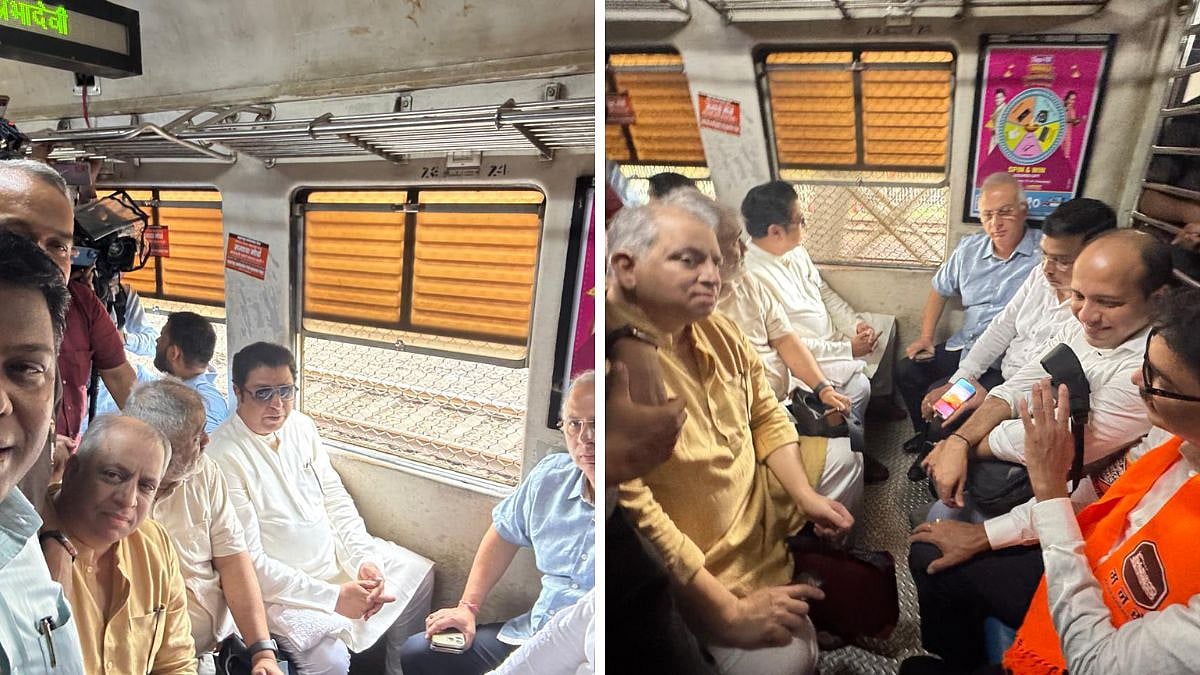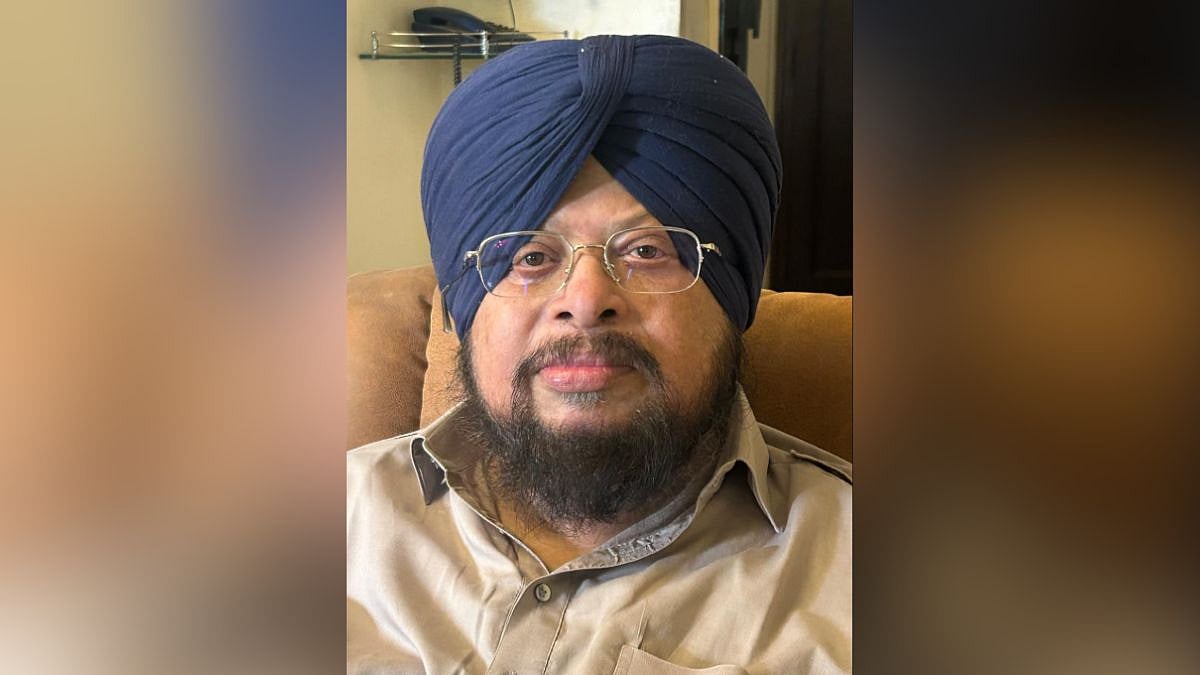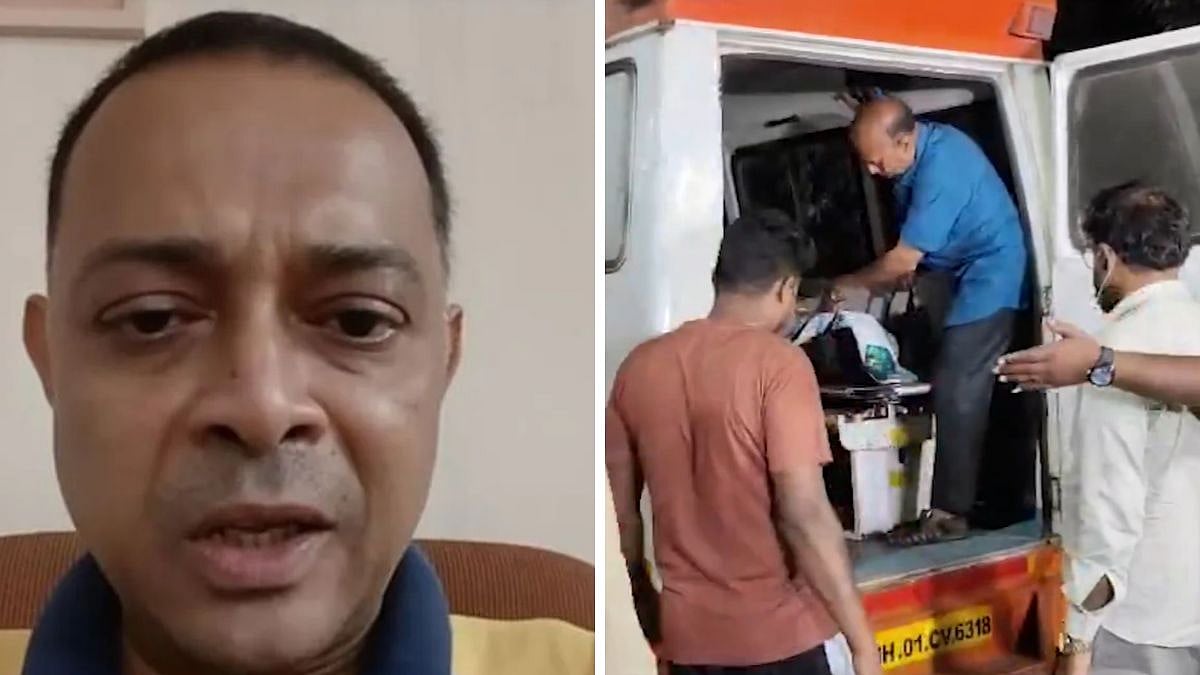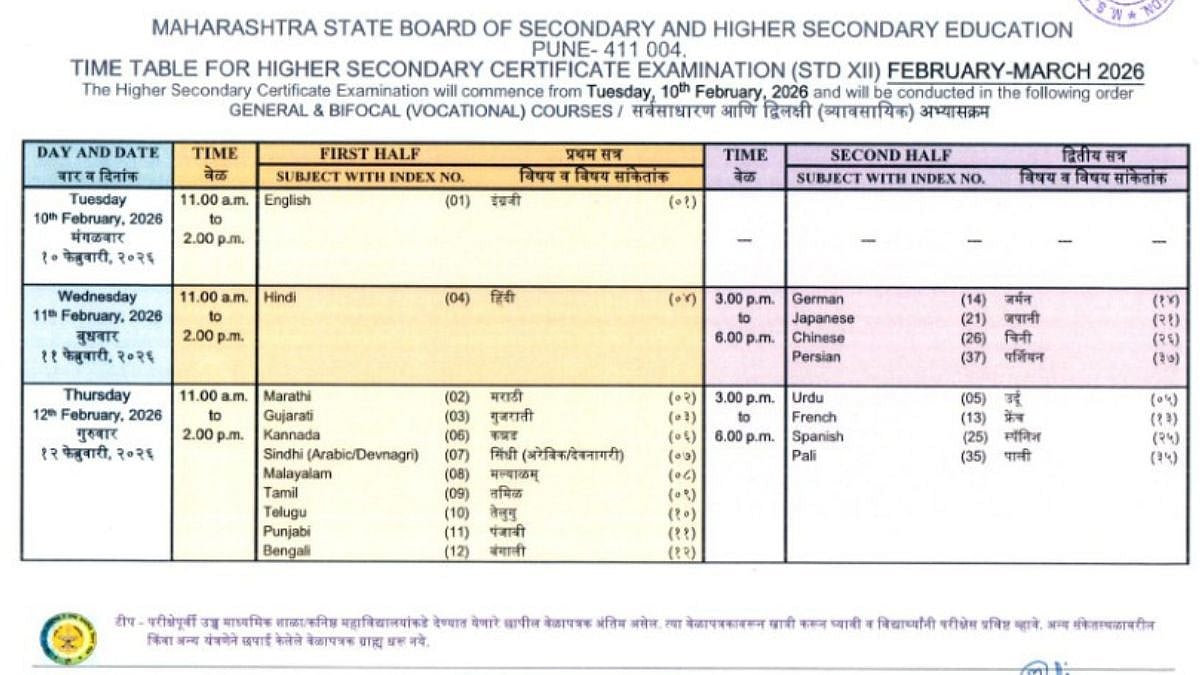From being the epicentre of the Coronavirus outbreak in the state to being hailed as a successful containment model, Mumbai has come a long way. With a high population density, the city faced a shortage of beds and oxygen as the second wave of COVID-19 started to peak, but according to BMC chief Iqbal Singh Chahal, it is now self-sufficient to meet its medical oxygen demand.
The city, with a population of at least 12.3 million, was able to cope with the crisis better than Delhi, which had almost the same number of active cases when the second wave of COVID-19 surged.
The "Mumbai Model" has been lauded by the Supreme Court, the Bombay High Court (HC), as well as NITI Aayog chief Amitabh Kant. Last week, the SC not only applauded the management of medical oxygen supply in Mumbai but also recommended that the Delhi government replicate the “Mumbai model” to fight the pandemic.
Chahal said that the Mumbai model is “not just about oxygen management”, but a combination of multiple initiatives and campaigns that were undertaken by the Mumbai civic body since the pandemic hit the financial capital.
“We could cope with the second wave better because of the initiatives and decisions taken and lessons learnt during the first wave. Oxygen management system brought in place is just one of those many things we did," he said.
Slew of measures working in tandem
Fifteen months since the deadly pathogen first made its way into Maharashtra, the state continues to be the worst-affected in terms of number of COVID-19 cases and fatalities. However, thanks to the "Mumbai Model", the combat strategies adopted during the second wave seem to have worked in getting a grip on the situation and dragging the number of cases down.
Chahal took charge as BMC commissioner in May 2020, when Mumbai's Covid crisis was at its peak. This is also when the Mumbai civic body found itself mired in controversies -- videos of corpses (of Covid patients) wrapped in black body bags lying next to living COVID-19 patients in three BMC-run hospitals. Besides, allegations of corruption and irregularity in tenders to procure body bags and equipment for setting up jumbo centres etc, was levelled against the civic administration by the Opposition. The city was also grappling with a shortage of PPE kits, sanitisers, oxygen masks, face shields, disposable bed sheets, dead body bags etc.
The Opposition also accused the civic body of failing to contain coronavirus after the cases started rising in September after Ganesh Chaturthi. There were complaints circulating on social media of people running from pillar to post for hospital beds, and hospitals denying admission to critical patients.
All this led to the creation of ward war rooms, live dashboards for beds, banning labs from handing over COVID test reports to positive patients directly, and the decision not to dismantle jumbo COVID facilities during the first wave. All these systems put in place during the first wave were crucial and helped in handling the second wave. "The system is on “auto pilot” mode now, and we just have to monitor it closely," said Chahal.
The campaigns initiated in May and June 2020 (during the first wave), such as 'Chase the Virus', 'Chase the Patients' (for testing, isolating and treating patients on priority), 'Mission Zero' (Rapid testing including mobile testing vans) and even "Mission Save Lives’ (aimed at reducing number of fatalities) proved to be a boon for the Mumbai civic body in handling the more virulent second wave. “All we had to do is re-activate and re-acquire all the beds and additional facilities in the form of COVID Care Centres (CCC) that we had shut down due to low occupancy in the month of July-September last year. It was easy as we had kept these facilities on standby," said Suresh Kakani, Additional Municipal Commissioner (Health).
Kakani added, "Creation of 24x7 ward war rooms helped us streamline the process of bed allotment. Thus, complaints of non-availability of beds came down drastically and later became an irrelevant issue. However, after SOS messages for oxygen and ICU beds, we introduced a criterion of medical check-up of symptomatic COVID-19 patients at their residence before allocating beds. This has led to systematic allocation of beds, saving ICU, oxygen and ventilators beds only for critical patients. This helped in bringing down the demand for ICU beds.” “Smaller hospitals have been trained to deal with critical cases. Arranging rooms in hotels for people who can afford to isolate them, so hospital beds can be left for those who really need such beds and for critical patients, was another measure. The chaos ended, and we had enough beds through this strategy."
The first wave affected over 3 lakh people, majority of whom live in congested slums or chawls. According to BMC's ward-wise data, over 80% of the cases in the second wave are from non-slum areas and highrises.
In what is another significant factor, which Chahal credits himself for, is the BMC issuing a tender to procure the antiviral drug Remdesivir at 300 per cent of its cost, helping to lower cases in Mumbai -- a decision he took despite all allegations and criticism. As the caseload increased in India, it was hit by a severe shortage of Remdesivir, leading to SOS calls on social media and black marketing, and Mumbai was no better. “I went ahead with the expensive order because I had to save human lives. People criticised me and I issued a clarification with all the documents and proof supporting my decision,” said Chahal. He added, "Dynamics were changing every day. The rates of Remdesivir changed every day, since it is a war-like situation due to massive surge in the number of cases. The move to pay more and acquire the stock was only meant to save lives, as 17,000 patients required Remdesivir at BMC hospitals. This is the Mumbai Model, where Team BMC is working tirelessly to save lives."
"The Mumbai model is a combination of a slew of measures taken by us since April 2020 till date, including decentralisation of system, setting up of vaccine centres, augmenting health infrastructure, taking bold decisions to save people from succumbing to the infection, keeping a close watch on the loopholes which we are gradually working on improving as soon as possible. It was during the first wave itself that we realised the importance of oxygen support and ventilators for COVID-19 patients. Instead of relying on a cylinder-based model, we upgraded our facilities with Liquid Medical Oxygen (LMO) tanks as soon as possible. As the second wave hit us, our dependency on the cylinders had considerably reduced. We can, in fact, say that we are more or less self-sufficient and working to even better it,” said Kakani.
Microplanning, resource mapping and optimal O2 use
When Chahal realised that oxygen allotted to the city was being diverted to other areas, he formed teams to track oxygen tankers and stationed staff at oxygen cylinder refilling stations. A proper system was brought in place to monitor and manage oxygen supply and usage. The city’s model is also based on the rational use of oxygen and conserving supplies. Hospitals were asked to plug leakages if any, and allot oxygen beds judiciously and strictly.
Mumbai’s active cases have now dropped to 41,102 and the city’s oxygen consumption is around 235 to 240 metric tonnes (MT). In comparison, last Saturday, the national capital had 87,907 active cases and an available supply of 499 MT of oxygen in spite of it requesting 700 MT.
During the first wave of coronavirus last year, Mumbai’s oxygen requirement was approximately 210 MT. It rose to 270 MT during the peak of the second wave when the city’s active cases hovered between 89,000 to 90,000.
Mumbai managed with 270 MT of oxygen when its active caseload was the same as New Delhi in mid-April. Officials from the Delhi government are now interacting with the civic officials in Mumbai to learn from their experience, after the Supreme Court’s recommendation.
To avoid incidents of shifting critical patients to another facility at the last moment due to shortage of oxygen supply, and to prevent deaths due to oxygen supply running out, BMC decided to monitor oxygen supply and stock at all private and BMC hospitals. The oxygen supply and stock is now being monitored every hour with the help of Google Drive.
Chahal had asked all oxygen manufacturers and distributors to work on ‘Mission Mode’ to ensure that there is adequate oxygen supply in civic and private hospitals across Mumbai.
The BMC has directed its staff to keep a track of oxygen supply and stock across hospitals and requirements on Google Drive, so that there is accurate supply and demand data available round-the-clock.
The move came after an incident in April in which 168 patients from six BMC hospitals had to be urgently relocated to other hospitals and medical facilities post-midnight after a shortage of oxygen was reported in the hospitals they were admitted in.
“Our teams networked with hospitals and moved around surplus oxygen from one place to another that was struck by a shortage. We found some smaller private hospitals taking patients beyond their oxygen bed capacity. They were advised not to do so and we issued guidelines asking them to shift critical patients to BMC run hospitals immediately,” Kakani said.
BMC installed nearly 24 Liquid Medical Oxygen (LMO) tanks in its COVID-19 facilities, more than half of which remained unused during the first wave. But it came in handy when the second wave hit the city and the need for oxygen and oxygenated beds increased drastically.
"We deputed teams for crisis management and closely monitored hospitals that were generating SOS calls. We found that many of these were not SOS calls at all, but mismanagement. We have dealt with this on priority and things are totally under control. Optimum utilisation of available oxygen supply and stock, seamless distribution and creation of buffer stock, along with the BMC’s ability to pull together its existing resources has led to make oxygen shortage a non-problem,” Chahal said.
Decentralisation and augmentation of facilities
"Decentralisation brought ease and efficiency to our functioning,” Chahal said, adding that chaos and allegations about non-availability of beds, the number of deaths, and testing were resolved due to decentralisation.
The system was streamlined. Patients were earlier getting their test reports directly from laboratories and then scrambling to get into a hospital of choice leading to chaos, confusion and non-availability of beds. Instead, a system was brought in place where a volunteer, assigned person, or doctors from the BMC were contacting the patient and informing them about the test report. This helped avert chaos, BMC officials said.
"We made it mandatory for beds to be allotted only through war rooms. We have been appealing to citizens to get in touch with the ward war rooms for beds and other pandemic related issues. Hospitals were directed not to entertain walk-in admission without informing ward war rooms. In cases where critical patients visited hospitals directly, the health care facilities were directed to update the dashboard — a live bed tracker with details on the availability of COVID-19 beds in the public and private hospitals across the city, which is accessible to all 24 ward war rooms," Chahal said.
The jumbo covid care centres that were built last year took away considerable patient load. It even took the load of COVID patients coming from outstation. In addition to the beds in public hospitals, the civic body requisitioned more than 80% of the beds in private hospitals and allotted them to patients through its war rooms.
Elaborating on how Jumbo covid centres are taking the load off city hospitals, Dr Neelam Andrade, Dean in charge of NESCO jumbo covid care centre in Goregaon said, " We started in June 2020. Since then, till date, we have completed a total 20,007 admissions of COVID patients. Admitting and treating so many patients in less than a year is a huge load taken off the hospitals. Today, we have a total of 2,016 beds with an additional 1,500 beds that were handed over recently. Besides, we have 206 ICU beds, one of the highest numbers of ICU beds for COVID," Andrade said, adding all jumbo centres have helped in easing the load on city hospitals in this way.
NESCO jumbo COVID care centre has 411 pipeline oxygen supply, and portable oxygen cylinders in addition, providing supply to all beds in the facility, Andrade said. She added, “At NESCO, we also have 10 dialysis machines through which we can take 30 cases of dialysis in a day. These are for patients who have COVID-19 infection and need dialysis as well."
The number of beds in the city has gone up drastically since the second wave hit the city (since the second week of February). As of February 11 this year, the total bed capacity for COVID patients in the city was 12,925. Of this, 1,707 were ICU beds, 6,869 oxygen beds and 1,033 were ventilator beds.
As per the dashboard on BMC's website, as of May 11, the total bed capacity in the city has increased to 31,662. Of these, 2996 were ICU beds, 12,794 are oxygen beds and 1,552 are beds with ventilators. As per the data shared by the civic body of the total bed capacity of 31,662, a total of 17,021 beds were vacant. Meanwhile, only 235 of the total 2,996 ICU beds were available and only 67 of the total 1,552beds with ventilators were available. Of the total 12,794, a total 5,418 oxygen beds were available as of May 11.
Future plans
According to Chahal, there is a need to boost the health infrastructure in the city. "Pandemic hit us after a century. It was new to us when it first hit us, and it is still new in many ways. But we have a fair idea of how to deal with it for now. We are still learning many things while on the job. However, there is a need to invest more in the health sector and set up more public hospitals."
Meanwhile, Mumbai has already started preparing for the third wave on a war footing, with more jumbo facilities and oxygen plants, adding nearly 5,500 more beds, of which 70 per cent is supposed to oxygenated. These include nearly 2,000 ICU beds with oxygen and ventilators. Four more jumbo centres are being set up which will further enhance patient capacity by 2,000 beds including 200 ICU beds, BMC officials said.


